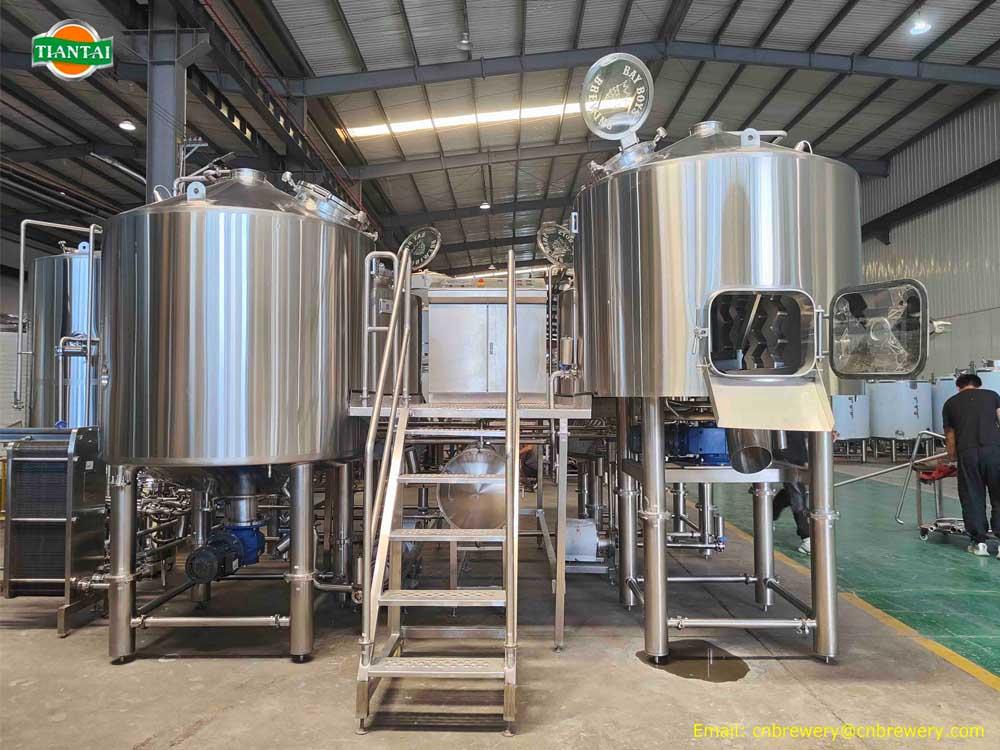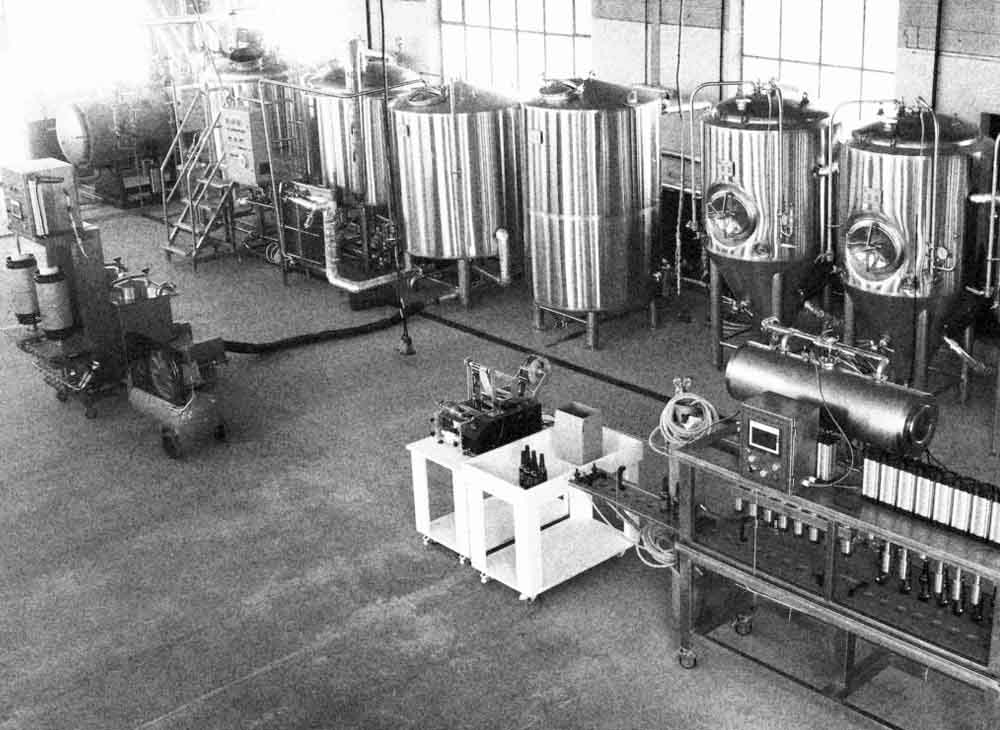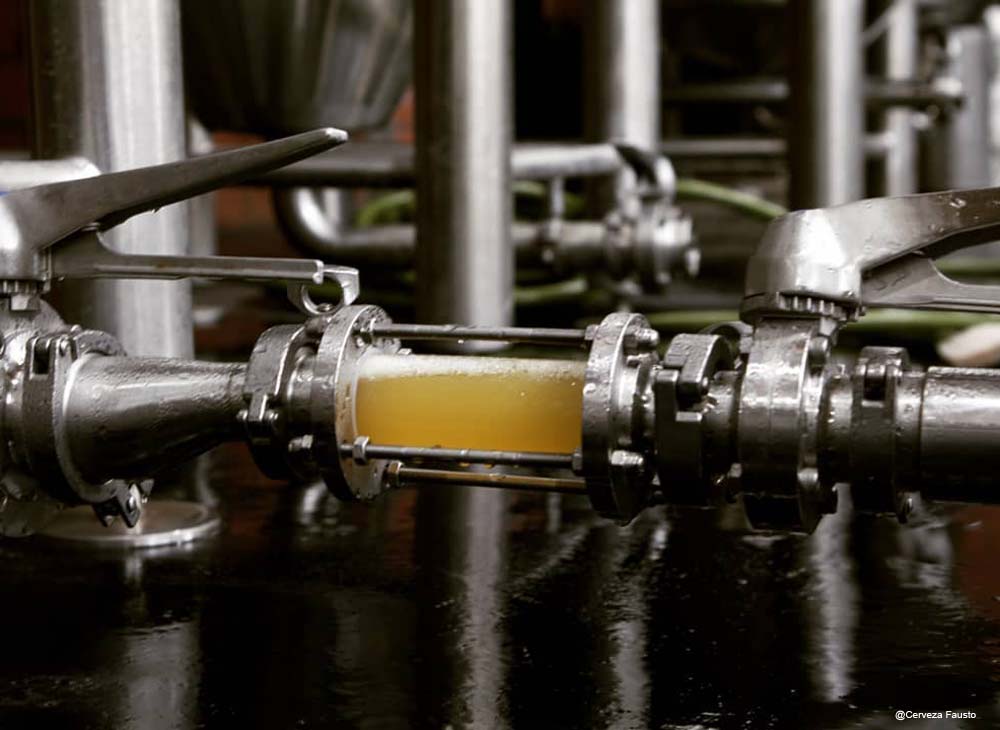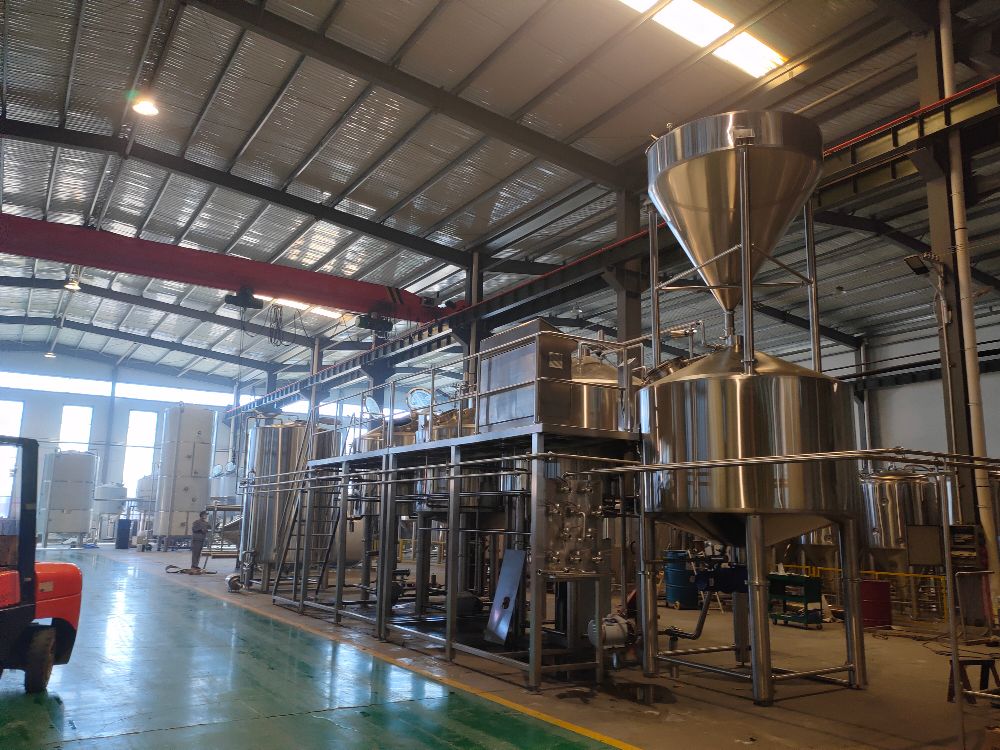HOW TO SELECT BEER BREWING EQUIPMENT
- Jun 30, 2021
- 100
- tiantai
We investigated beer brewing equipment for regarding 2 years prior to positioning an order. There are a lot of variables to think about such as dimension, variety of vessels, sort of warm resource, cooling down the wort, along with nation of production and also design beginning.
Below's a recap of the major problems that were taken into consideration as well as our strategy to a service.
Vessels required for beer brewing
Industrial beer brewing calls for a number of various kinds of huge vessels constructed from stainless-steel. The water obtains heated up in a devoted vessel called the Hot Alcohol Storage Tank (" alcohol" is referring to the technological term for any kind of fluid utilized in a procedure of some kind, not the fluid that obtains you intoxicated). The warm water is after that moved to a vessel referred to as the Mash/Lauter Tun where it fills machine made grain to remove the tasty sugars and also tastes.
After a bit, the carbohydrate-rich water is moved to the Boil Pot ideal beside the mash tun where it is offered steaming temperature level by a straight gas-fired heater, indirect gas-fired heater, heavy steam, or electrical aspects. Jumps (as well as various other unique active ingredients depending upon the dish) are included throughout the boil. As soon as that is finished, the boil pot comes to be a Whirlpool, requiring the water right into a vortex that divides it from the bigger fragments in the service (like big collections of jumps).
Jointly, they're referred to as the Beer Brewhouse. As beer breweries broaden (get to the restriction of beer that can be generated from the brewhouse in a 24 hr duration), they will certainly usually include a 3rd vessel for a devoted whirlpool (as well as after that a 4th vessel for devoted lauter).
Instance of a brewhouse included a Mash/Lauter tun, system, and also make pot.
Instance of a brewhouse consisted of a Mash/Lauter tun, system, and also make pot.
The warm fluid is after that cooled down and also moved to a Fermenting Vessel where yeast is included as well as the magic of changing sugars to alcohol starts for numerous days to a couple of weeks. The fermentation procedure is quit as well as beer is moved to a Brite Storage tank where it is cooled down also better to permit staying fragments in the beer to drop to the base of the storage tank. When ended up, the beer can be kegged or bottled/canned for offering.
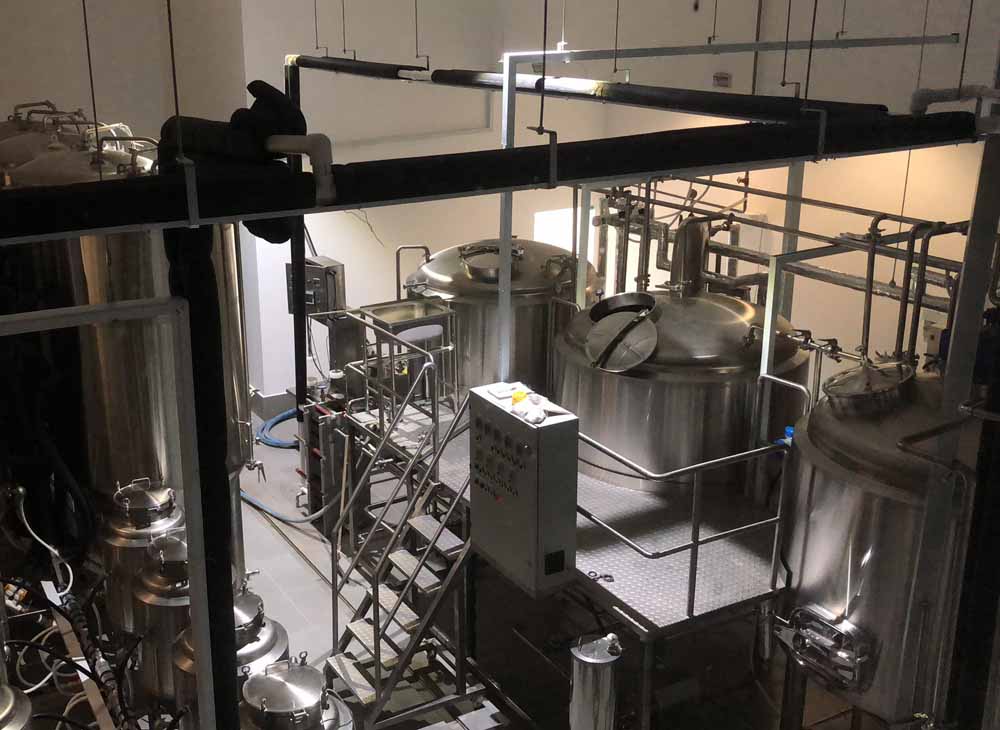
Sizing Factors to consider
A lot of start-up beer microbreweries size their brewhouse at 10-30 barrels (1 barrel = 31.5 gallons = 2 huge kegs = 240 pints of beer) as well as have actually equivalent-sized fermenter/brite containers.
Sizing the brewhouse is a harmonizing act for a brand-new brewery that can not be certain of sales as well as development. Beginning as well huge will certainly put a pressure on first expenses as well as make a poor set of beer a pricey error.
If there isn't much area to include extra fermenting as well as brite containers in the future, beginning with a huge brewing system isn't sensible. Unless your area has a high dock door, these storage tanks require appropriate ceiling elevation to be slanted up to standing within the area. Big breweries will certainly typically produce an opening in the ceiling to go down in these storage tanks.
Dimension the fermenters/brite storage tanks at dual the dimension of the brewhouse. The containers can be half filled up when service is sluggish and also loaded totally with dual sets from the brewhouse when need rises.
Variety of Vessels
A basic guideline is to acquire the variety of fermenters and also brite storage tanks required to take you with the very first 2-3 years of manufacturing. You can compute the approximate optimum yearly ability of a fermenter utilizing these metrics:
A means to streamline this is to presume 80% ale manufacturing (much shorter fermentation time), 20% beer manufacturing (longer fermentation time) as well as 50 weeks of brewing (presumes some getaway and/or upkeep time):.
Yearly ability = fermenting quantity * 42.
This likewise thinks that you have adequate variety of brite containers to revolve beers this promptly.
Think about beginning with the very same proportion of brite to fermenting vessels if you intend to have a whole lot of various beers on faucet at any kind of provided time.
Brewhouse Warm Resource.
There are 3 warmth resources for the warm alcohol container as well as make pot:.
Straight FireA fire heats up the outside of the container which moves warm to the fluid in the container.
Pros: the very least costly; finest alternative for tiny systems.
Disadvantages: a focused location of warm that can burn the wort; ineffective power use (warm shed to bordering air); except usage on systems bigger than 10 barrels.
Indirect FireA fairly brand-new approach where fire heats up air in a different heater box that is after that flowed throughout a coat around the storage tank.
Pros: valued comparable to guide fire; no scorching.
Disadvantages: not as effective as electrical or heavy steam; except usage on systems bigger than 10 barrels.
ElectricLarge burner are positioned inside the pot similar to a property electrical hot water heater.
Pros: more economical than vapor; really effective power application.
Disadvantages: power occasionally much more costly than gas; demands 3-phase hefty power; except usage on systems bigger than 10 barrels.
SteamThis is the sector requirement for brewing systems sized 15 barrels as well as up. A different central heating boiler heats up water with gas fire to produce heavy steam that is distributed via a shielded steel coat around the pot.
Pros: rather effective; warms swiftly.
Disadvantages: most pricey; needs different pricey central heating boiler; central heating boiler upkeep.
Picking a Vendor.
There are several providers of brewing vessels, particularly offered the boom of brand-new breweries within the last years. Many distributors do not really make the vessels themselves.
Select one that utilizes US-based designers to create the tools if you do finish up picking a distributor that imports devices. Bear in mind that importing from abroad includes substantial delivery fees, frequently regarding 10% of the expense of the devices itself. The delay time for shipment is additionally much longer.
Confirm that any kind of foreign-built devices has electric parts that are ranked for your nation in addition to layout specs in English.
The brewing sector normally positions one of the most worth on locally made as well as made vessels. The United States often tends to have greater requirements for the high quality of steel utilized in food-grade tools as well as the develop often tends to be much better. This naturally comes with a greater expense, however might be made up with conserving a lot more from delivery.
For any type of distributor, it's extremely crucial to examine their referrals. Request for a checklist of their clients and also call them directly to ask:.
What was purchased.
High quality of devices got.
Any kind of hold-ups.
Problems ran into as well as just how distributor reacted.
Whether they would certainly get from the vendor once again.
, if they advise this distributor.
.
Our Method.
We chose a 10 barrel beer brewing equipment indirect fire brewhouse for the adhering to factors:.
Indirect fire supplied the advantages of also heating up like vapor does yet without the expense as well as upkeep of a central heating boiler.
We really did not desire a central heating boiler to ensure that restricts us to brewhouse dimensions of much less than 15 barrels.
Substantial decrease in general devices prices contrasted to bigger systems however still large sufficient to generate beer for circulation (contrasted to systems smaller sized than 10 barrels).
We purchased storage tanks in a 1:1 proportion - 3 brite containers and also 3 fermenters. Because glycol coats are usually just around the top fifty percent of the vessel, they will not sufficiently cool down a storage tank that is just half complete.
We picked Rocky Hill Vessels, a US-based distributor that makes as well as produces vessels at their Colorado place. In enhancement, the steel is sourced locally.
The water obtains heated up in a devoted vessel called the Hot Alcohol Storage Tank (" alcohol" is referring to the technological term for any kind of fluid utilized in a procedure of some kind, not the fluid that obtains you intoxicated). The fermentation procedure is quit and also beer is moved to a Brite Storage tank where it is cooled down also better to enable staying bits in the beer to drop to the base of the storage tank. If there isn't much area to include added fermenting and also brite containers in the future, beginning with a big brewing system isn't smart. We got containers in a 1:1 proportion - 3 brite storage tanks as well as 3 fermenters. Given that glycol coats are typically just around the top fifty percent of the vessel, they will not properly cool down a storage tank that is just half complete.
-----------------
Edited by Laura
Sales Manager in Tiantai Company
Email: [email protected]
Below's a recap of the major problems that were taken into consideration as well as our strategy to a service.
Vessels required for beer brewing
Industrial beer brewing calls for a number of various kinds of huge vessels constructed from stainless-steel. The water obtains heated up in a devoted vessel called the Hot Alcohol Storage Tank (" alcohol" is referring to the technological term for any kind of fluid utilized in a procedure of some kind, not the fluid that obtains you intoxicated). The warm water is after that moved to a vessel referred to as the Mash/Lauter Tun where it fills machine made grain to remove the tasty sugars and also tastes.
After a bit, the carbohydrate-rich water is moved to the Boil Pot ideal beside the mash tun where it is offered steaming temperature level by a straight gas-fired heater, indirect gas-fired heater, heavy steam, or electrical aspects. Jumps (as well as various other unique active ingredients depending upon the dish) are included throughout the boil. As soon as that is finished, the boil pot comes to be a Whirlpool, requiring the water right into a vortex that divides it from the bigger fragments in the service (like big collections of jumps).
Jointly, they're referred to as the Beer Brewhouse. As beer breweries broaden (get to the restriction of beer that can be generated from the brewhouse in a 24 hr duration), they will certainly usually include a 3rd vessel for a devoted whirlpool (as well as after that a 4th vessel for devoted lauter).
Instance of a brewhouse included a Mash/Lauter tun, system, and also make pot.
Instance of a brewhouse consisted of a Mash/Lauter tun, system, and also make pot.
The warm fluid is after that cooled down and also moved to a Fermenting Vessel where yeast is included as well as the magic of changing sugars to alcohol starts for numerous days to a couple of weeks. The fermentation procedure is quit as well as beer is moved to a Brite Storage tank where it is cooled down also better to permit staying fragments in the beer to drop to the base of the storage tank. When ended up, the beer can be kegged or bottled/canned for offering.

Sizing Factors to consider
A lot of start-up beer microbreweries size their brewhouse at 10-30 barrels (1 barrel = 31.5 gallons = 2 huge kegs = 240 pints of beer) as well as have actually equivalent-sized fermenter/brite containers.
Sizing the brewhouse is a harmonizing act for a brand-new brewery that can not be certain of sales as well as development. Beginning as well huge will certainly put a pressure on first expenses as well as make a poor set of beer a pricey error.
If there isn't much area to include extra fermenting as well as brite containers in the future, beginning with a huge brewing system isn't sensible. Unless your area has a high dock door, these storage tanks require appropriate ceiling elevation to be slanted up to standing within the area. Big breweries will certainly typically produce an opening in the ceiling to go down in these storage tanks.
Dimension the fermenters/brite storage tanks at dual the dimension of the brewhouse. The containers can be half filled up when service is sluggish and also loaded totally with dual sets from the brewhouse when need rises.
Variety of Vessels
A basic guideline is to acquire the variety of fermenters and also brite storage tanks required to take you with the very first 2-3 years of manufacturing. You can compute the approximate optimum yearly ability of a fermenter utilizing these metrics:
Daily fermenting quantity offered = # vessels * quantity of vessel
Transforms each year = # of mixture days annually/ days to ferment typical beer
Yearly capability = fermenting quantity * transforms each year
A means to streamline this is to presume 80% ale manufacturing (much shorter fermentation time), 20% beer manufacturing (longer fermentation time) as well as 50 weeks of brewing (presumes some getaway and/or upkeep time):.
Yearly ability = fermenting quantity * 42.
This likewise thinks that you have adequate variety of brite containers to revolve beers this promptly.
Think about beginning with the very same proportion of brite to fermenting vessels if you intend to have a whole lot of various beers on faucet at any kind of provided time.
Brewhouse Warm Resource.
There are 3 warmth resources for the warm alcohol container as well as make pot:.
Straight FireA fire heats up the outside of the container which moves warm to the fluid in the container.
Pros: the very least costly; finest alternative for tiny systems.
Disadvantages: a focused location of warm that can burn the wort; ineffective power use (warm shed to bordering air); except usage on systems bigger than 10 barrels.
Indirect FireA fairly brand-new approach where fire heats up air in a different heater box that is after that flowed throughout a coat around the storage tank.
Pros: valued comparable to guide fire; no scorching.
Disadvantages: not as effective as electrical or heavy steam; except usage on systems bigger than 10 barrels.
ElectricLarge burner are positioned inside the pot similar to a property electrical hot water heater.
Pros: more economical than vapor; really effective power application.
Disadvantages: power occasionally much more costly than gas; demands 3-phase hefty power; except usage on systems bigger than 10 barrels.
SteamThis is the sector requirement for brewing systems sized 15 barrels as well as up. A different central heating boiler heats up water with gas fire to produce heavy steam that is distributed via a shielded steel coat around the pot.
Pros: rather effective; warms swiftly.
Disadvantages: most pricey; needs different pricey central heating boiler; central heating boiler upkeep.
Picking a Vendor.
There are several providers of brewing vessels, particularly offered the boom of brand-new breweries within the last years. Many distributors do not really make the vessels themselves.
Select one that utilizes US-based designers to create the tools if you do finish up picking a distributor that imports devices. Bear in mind that importing from abroad includes substantial delivery fees, frequently regarding 10% of the expense of the devices itself. The delay time for shipment is additionally much longer.
Confirm that any kind of foreign-built devices has electric parts that are ranked for your nation in addition to layout specs in English.
The brewing sector normally positions one of the most worth on locally made as well as made vessels. The United States often tends to have greater requirements for the high quality of steel utilized in food-grade tools as well as the develop often tends to be much better. This naturally comes with a greater expense, however might be made up with conserving a lot more from delivery.
For any type of distributor, it's extremely crucial to examine their referrals. Request for a checklist of their clients and also call them directly to ask:.
What was purchased.
High quality of devices got.
Any kind of hold-ups.
Problems ran into as well as just how distributor reacted.
Whether they would certainly get from the vendor once again.
, if they advise this distributor.
.
Our Method.
We chose a 10 barrel beer brewing equipment indirect fire brewhouse for the adhering to factors:.
Indirect fire supplied the advantages of also heating up like vapor does yet without the expense as well as upkeep of a central heating boiler.
We really did not desire a central heating boiler to ensure that restricts us to brewhouse dimensions of much less than 15 barrels.
Substantial decrease in general devices prices contrasted to bigger systems however still large sufficient to generate beer for circulation (contrasted to systems smaller sized than 10 barrels).
We purchased storage tanks in a 1:1 proportion - 3 brite containers and also 3 fermenters. Because glycol coats are usually just around the top fifty percent of the vessel, they will not sufficiently cool down a storage tank that is just half complete.
We picked Rocky Hill Vessels, a US-based distributor that makes as well as produces vessels at their Colorado place. In enhancement, the steel is sourced locally.
The water obtains heated up in a devoted vessel called the Hot Alcohol Storage Tank (" alcohol" is referring to the technological term for any kind of fluid utilized in a procedure of some kind, not the fluid that obtains you intoxicated). The fermentation procedure is quit and also beer is moved to a Brite Storage tank where it is cooled down also better to enable staying bits in the beer to drop to the base of the storage tank. If there isn't much area to include added fermenting and also brite containers in the future, beginning with a big brewing system isn't smart. We got containers in a 1:1 proportion - 3 brite storage tanks as well as 3 fermenters. Given that glycol coats are typically just around the top fifty percent of the vessel, they will not properly cool down a storage tank that is just half complete.
-----------------
Edited by Laura
Sales Manager in Tiantai Company
Email: [email protected]

